We know that an engine is considered as the heart of a car. But this heart is useless if the power its producing goes nowhere. That’s where the drivetrain comes in. The job of this system is to transfer the power generated by the engine to the wheel. They are also responsible for how much power each tyre must get.
Learn More: FWD, RWD, AWD, 4WD Drivetrains Explained

We will explain two possible engine and tyre combinations which are the most commonly used ones. Front-engine front-wheel drive and front-engine rear-wheel drive. Before we get into those we’ll take a look at the parts involved.
Parts That Make A Drivetrain
Some of these parts are exclusive to the front-wheel or rear-wheel drive so you might not see them in the appropriate section explaining the systems.
Transaxle
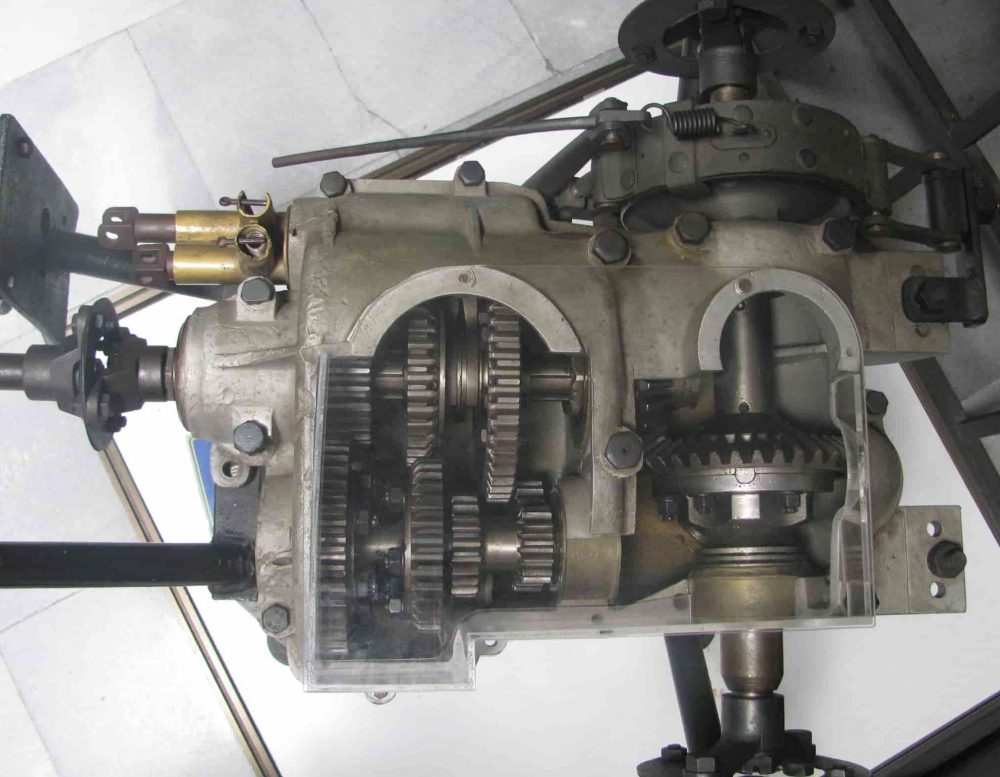
A device that is available in the front-wheel drive. It is named as such because it does the job of both transmission and an axle. It’s connected to the clutch or the torque converter depending on what transmission type you are driving. Its other end is connected to either a differential or another set of gears.
Constant Velocity Joint (CV Joint)
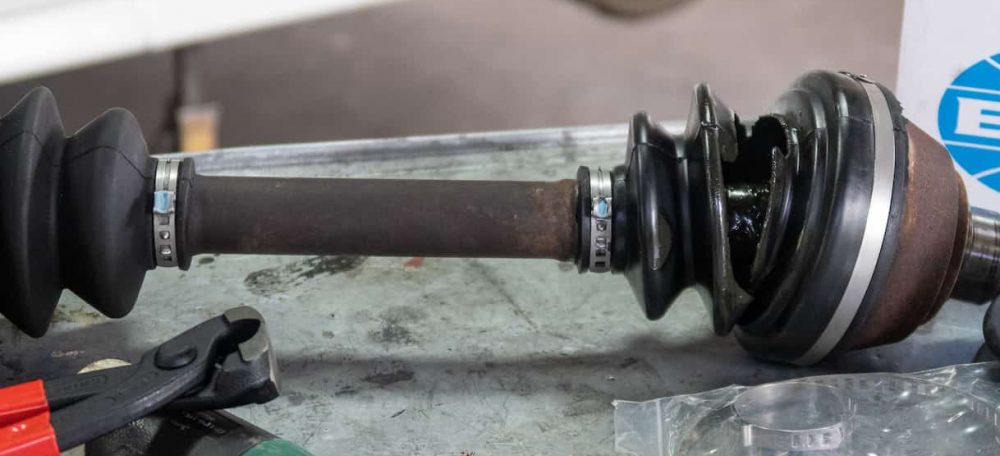
The CVJ’s are used to transmit power through a variable angle. These joints are a necessary part of the transmission system. They transfer this power at a constant rotational speed and have really low friction.
Half Shaft
A driving axle, it is divided into two parts to be used at both wheels. One end is connected to the differential while the other end connects to the wheel.
Universal Joint
It is a joint that connects two shafts whose axes are inclined i.e there is an angle between the axes. They are used in rear-wheel drive and connect the transmission to driveshaft and driveshaft to the differential.
Driveshaft
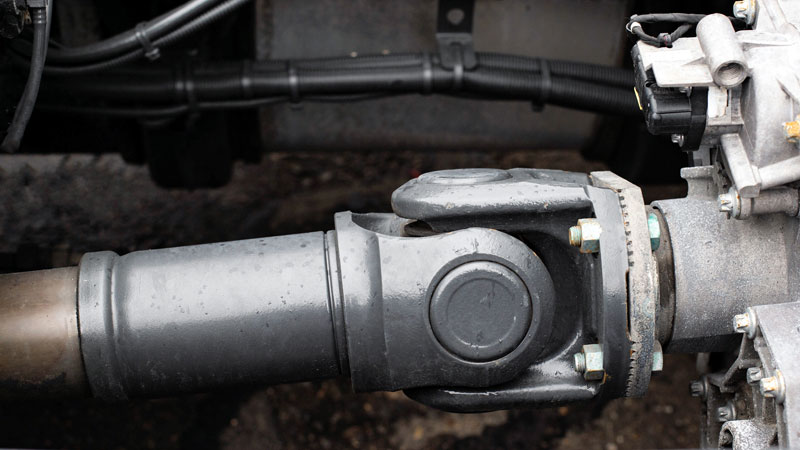
A shaft that drives quite simple if its put in this way. The job of the driveshaft is to transfer torque from engine to differential while preserving as much of it as possible.
Differential
A part which can get a bit hard to explain so we will keep it brief here. Its job is to first convert the rotational motion into linear motion. Then it’s supposed to carry this linear force to the two wheels. And finally, it’s responsible to control which wheel gets how much power.
Now that the parts are explained we can go into the working of the two combinations.
Front Engine Front Wheel Drive
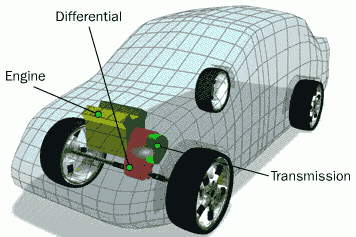
Simple to imagine, its the configuration where both the engine and the driving wheels are at the front. The engine generated the power which is then provided to the transaxle. The transaxle then performs the job of both a transmission and axle and transfers this power over to the half shaft and CV joint. The CV joints transfer the motion at an inclined angle to the wheels and thus the power is transmitted.
Front Engine Rear Wheel Drive
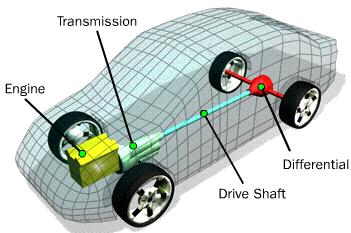
The engine generates power and then transfers it to the clutch or torque converter. These then forward the power to a transmission which is connected to a driveshaft through universal joints. The UV joints provide both power transmission and flexibility to the shafts if they were to undergo an external force. The end of the driveshaft is connected to a differential through another UV joint. The differential then transfers power to the wheels according to necessary requirement.
Also, Read The Curious Case of “Special Edition” Cars in India
This covers two of the major drive combinations and how they work. There are more combinations but we decided to explain these two as they are more common.
Informative Read: VVT (Variable Valve Timing) and its Features Explained






